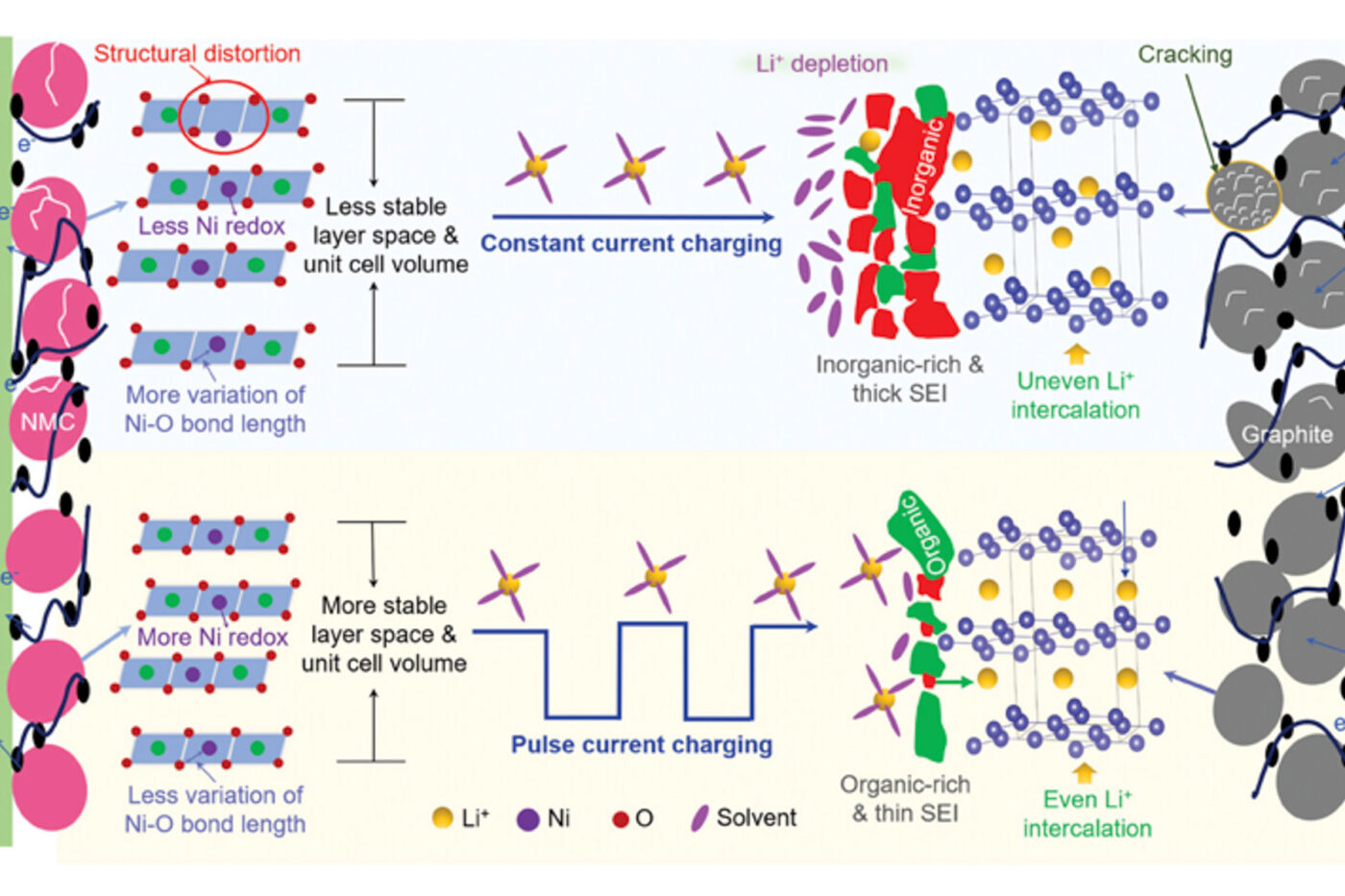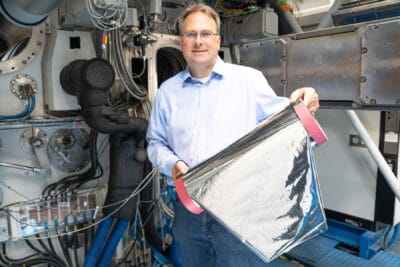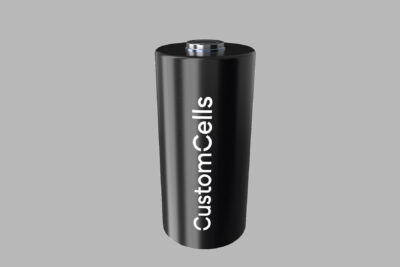European research teams to increase battery life with new charging protocol
Currently, the protocols provide for charging with a constant current flow. However, as the study by the team led by Philipp Adelhelm (Helmholtz Centre Berlin and Humboldt University) in collaboration with TU Berlin and Aalborg University in Denmark has shown, this is not the best method. The study, which was published in the journal Advanced Energy Materials, analyses the influence of the charging protocol on the service life of the battery.
As part of the project, the researchers analysed commercially available NMC532 cells with a graphite anode. In the cathode, the compounds of nickel, manganese and cobalt are mixed in a ratio of 5:3:2 alongside the lithium. Many electric cars are currently on the road with such a mixture, even though the trend in new cars is now moving towards NMC811.
Some of the battery tests were carried out at Aalborg University. The batteries were either charged conventionally with constant current (CC) or with a new charging protocol with pulsed current (PC). The cells were then disassembled and scrutinised in post-mortem analyses, which revealed “clear differences” according to the researchers. For example, the solid electrolyte interface (SEI) at the anode was significantly thicker on the samples that were charged with a constant current, which impaired the capacity. In addition, the team found more cracks in the structure of the NMC532 and graphite electrodes, which also contributed to the capacity loss. In contrast, PC charging resulted in a thinner SEI interface and fewer structural changes in the electrode materials.
These initial observations were analysed in more detail with further investigations. At ‘BESSY II’, a 240-metre-long ring accelerator for electrons at the Helmholtz Centre, researcher Yaolin Xu examined the cells using operando Raman spectroscopy and dilatometry as well as X-ray absorption spectroscopy. This enabled him to analyse what happens during loading with different protocols. Additional experiments were carried out at the PETRA III synchrotron. “The pulsed current charging promotes the homogeneous distribution of the lithium ions in the graphite and thus reduces the mechanical stress and cracking of the graphite particles. This improves the structural stability of the graphite anode,” he concludes. The pulsed charge also suppresses structural changes in the NMC532 cathode materials.
In other words, charging with high-frequency pulsed current reduces ageing effects. However, the research teams have also discovered that it depends on the frequency of the pulsed current. Charging protocols with high-frequency pulsed current extend the service life of commercial lithium-ion batteries the most, up to doubling the cycle life (with 80 per cent capacity retention). Co-author Julia Kowal, an expert in electrical energy storage technology at TU Berlin, emphasised: “Pulsed charging could bring many advantages in terms of the stability of the electrode materials and the interfaces and significantly extend the service life of batteries.”





0 Comments